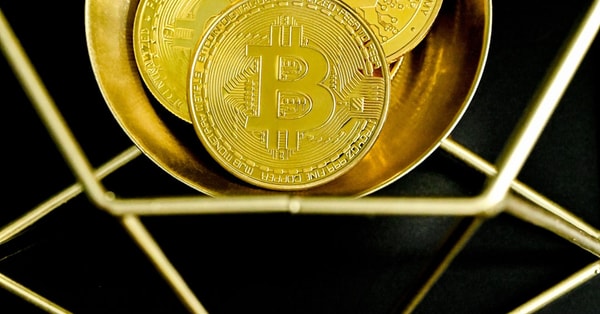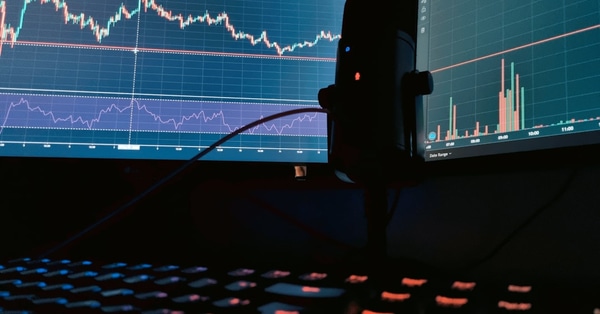Weaving a Greener Future: Trends in Sustainable Fashion 2024
Curious about how fashion is changing in 2024? Let’s dive into sustainable trends that are making waves and reshaping our wardrobe choices for the better.
As we step into 2024, the fashion industry finds itself at a critical crossroads, where consumer consciousness and eco-innovation are reshaping the very fabric of style. What does this mean for brands, consumers, and our planet? Join me as we explore the threads of sustainable fashion trends in 2024 that are not just fashion statements, but statements of intent.
bitcoin The fashion industry is at a turning point. With fast fashion’s reach hitting saturation, there's an undeniable shift towards sustainability. You can almost feel the buzz of excitement as consumers become increasingly aware of the impact their choices have on the environment. Personally, I’ve seen this change reflected in my own wardrobe. I used to buy on impulse, but now I seek out eco-friendly options that resonate with my values.
So, what's trending in sustainable fashion as we welcome 2024? For starters, we're seeing a rise in regenerative practices, where brands focus on restoring the environment rather than just reducing harm. Think of it as fashion with a purpose, where every piece has a story behind it. There’s also the secondhand renaissance. Thrift stores and resale apps are buzzing as more people look to vintage and pre-loved pieces. It’s like a treasure hunt!
Weaving a Greener Future: Trends The key to understanding these trends lies in fashion industry analysis. Brands are no longer just guessing what consumers want; they’re diving deep into analytics to adapt their strategies. This responsiveness is paving the way for a more sustainable future.

The eco-friendly apparel market is booming! According to recent studies, it’s projected to reach over $8 billion by 2025. That’s not just a statistic; it’s a movement. Leading the charge are brands like Patagonia and Eileen Fisher, who have set the standard for sustainability. I remember stumbling upon Rothy's, a brand making shoes from recycled plastic. Not only did I fall in love with their chic designs, but I also felt good supporting a company committed to reducing waste. It completely shifted how I approach shopping.
Now, let’s talk about the big players: consumers. What drives today’s shoppers? As someone who's spent hours scrolling through Instagram, I can tell you that social media plays a huge role. Influencers showcasing their sustainable finds can ignite a wave of interest faster than you can say “eco-chic.” People are sharing their sustainable choices like badges of honor, and it’s inspiring!
Take a look at the #SustainableFashion hashtag. You’ll find real stories of individuals prioritizing ethical choices over fast fashion. It’s becoming a cultural movement, one where people are saying “no thanks” to cheap chic and “yes please” to quality and care.
So, what does ethical fashion really mean? At its core, it’s about transparency and accountability in sourcing and production. Brands like Everlane have embraced this philosophy wholeheartedly, sharing their cost breakdowns and revealing who makes their clothes. It’s a refreshing change in an industry often shrouded in secrecy.
There was a moment when I engaged with a brand that openly shared its sustainability journey. I felt connected to their mission, almost like we were part of the same team working towards a common goal. That’s the beauty of transparency—it fosters trust and loyalty in ways traditional marketing just can’t achieve.

Let’s geek out for a minute on how technology is shaking things up. Blockchain is one of those buzzwords, but it’s a game changer in fashion supply chains. Imagine knowing where every fiber of your clothing came from. That’s the kind of transparency consumers crave. Add in sustainable materials—like organic cotton and lab-grown leather—and you get a recipe for a truly innovative fashion landscape.
I’m genuinely excited about how these advancements are influencing my own fashion choices. It’s not just about looking good anymore; it’s about feeling good about what I wear.
Of course, it’s not all rainbows and butterflies. The sustainable fashion movement faces challenges—greenwashing being one of the most frustrating. Brands sometimes slap a “sustainable” label on products without real commitment. But there’s hope! New and established brands alike are rising to the challenge, finding innovative ways to make sustainability scalable.
My vision for the future? I see a world where style and sustainability coexist beautifully. A place where consumers demand accountability, and brands leap at the chance to create responsibly. Let’s blend style with ethical responsibility and watch the magic unfold!

To wrap it all up, sustainability in fashion is no longer a fleeting trend; it’s a necessary shift in how we think about what we wear. With the eco-friendly apparel market expanding rapidly and transparency taking center stage, we’re witnessing a cultural change that every one of us can be part of.
So, I encourage you to engage with sustainable fashion. Explore new brands, share your experiences, and contribute to this vibrant narrative of change. After all, every choice we make weaves a thread in the fabric of our collective future. Let’s make it a beautiful one!
What’s your favorite eco-friendly find? I’d love to hear your stories!
Tags:
Related Posts
Consumer Behavior Trends to Watch in E-Commerce 2024
Curious how shopping habits are changing this year? Explore the key trends in consumer behavior that will shape e-commerce in 2024 and beyond!
The Remote Work Revolution: Boosting Productivity in 2023
Discover how the evolving remote work trends of 2023 are redefining employee productivity. Is flexibility enhancing efficiency, or causing chaos?
Master Google Analytics: A Small Biz Owner’s Secret Weapon
Navigating Google Analytics can be tricky for small business owners. Discover how to harness its power to boost your website and attract more customers.
5 Remote Work Trends to Boost Your Business in 2024
Ready for 2024? Discover the top 5 remote work trends that can transform your business strategy and help your team thrive in the new work landscape.
Your Friendly Guide to DIY Home Renovation Projects
Ready to transform your space? Join us as we explore fun and practical DIY home renovation ideas that reflect your unique style and needs!
10 Essential Time Management Tips for Remote Workers
Struggling to juggle work and home life? Discover 10 must-try tips to boost your productivity and find balance while working remotely!